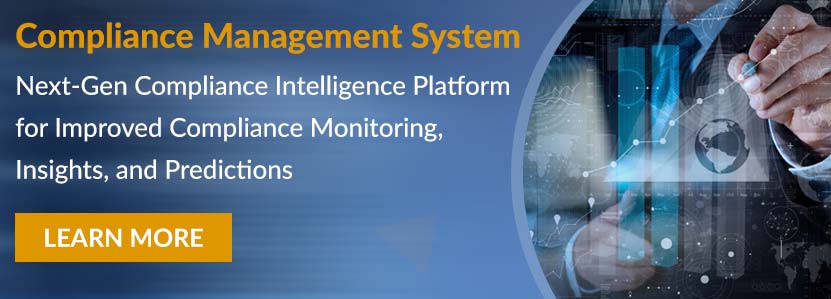Home/ Blog / Ushering in the Age of Risk and Compliance Integration
The tide of time is moving towards integration. Information technology has made it easier for businesses to connect different departments and people. The new connections formed in businesses are enabling cross-functional activities which provide businesses with enhanced insights, better operational efficiency, and increased visibility into the progress being made within each department. Connecting risk and compliance means that businesses can use tools and features that simplify and streamline the management of both risk and compliance.

Operational and Executive Visibility through Dashboards
Businesses can construct dashboards that include real-time data from risk and compliance evaluations. This allows unprecedented visibility into risk and compliance. Board members, managers, the risk team, and the compliance team can view the latest assessment and testing findings and dive down for additional data directly from configurable dashboards. Previously everyone was dependent on manual reporting. The risk and compliance teams would collect data, analyze it, then compile a report which was seen by other stakeholders. Dashboards provide real-time insights that are simply not possible without integrating risk and compliance through technology.
Productivity Oriented Task Management
Integrating risk assessments and compliance testing improves both processes’ efficiency by allowing risk and compliance teams to focus on areas that will benefit the organization the most. Risk teams can use compliance testing to determine which risks are the most difficult to manage for the controls and concentrate their efforts on those risks to develop more effective mitigation strategies. Compliance teams can focus their attention on the most severe risks identified in recent risk assessments and the controls associated with those risks.
Connecting risk and compliance means that businesses can use tools and features that simplify and streamline the management of both risk and compliance. Click To TweetUnlocking Intelligence
By connecting risk and compliance data, new insights and forecasts become possible. Businesses can monitor the risk and compliance frameworks in real-time and better understand how they interact. The combined data can be evaluated for trends and patterns that can improve the productivity of the business’s risk and compliance procedures.
Synchronized Risk and Compliance Management
The ability of risk and compliance teams to collaborate through assessment and testing integration modifies and improves the dynamics of both departments. Without integration, both departments remain focused on their aims and are uninformed of the other’s efforts. There is much coordination, as risk and compliance are intrinsically linked domains, yet the broader picture remain elusive. By integrating risk assessments and compliance testing, this veil is lifted, and both teams gain visibility into what the other team is doing and how it affects their work. This enables both departments to communicate more effectively and collaborate more effectively.
Why Integration Matters
Businesses were ecstatic about the possibilities enabled by data collection, which resulted in a major focus on big data. Companies had gained a wealth of knowledge into their operational efficiency during the last two decades, enabling objective measurement of performance that was previously impossible when labor was performed manually. However, collecting and tracking data is no longer as intriguing as combining multiple data points to reach new conclusions. The discussion has progressed beyond simply recording and showing metrics; the current focus is on extracting the most insights from the given data.
The last few decades have seen a continuous increase in the number of integrated data streams, and there is no reason to expect that trend will reverse in the future. The key to risk and compliance success is integrating solutions. Modular solutions can scale as the business’s demands evolve, thus leaving flexibility for future integrations is an excellent method to future-proof the risk and compliance frameworks in use inside the organization.
The possibilities made possible by integrating risk assessments and compliance testing demonstrate the integrations’ promise. By integrating risk and compliance management, firms can reduce their inputs while increasing their outputs from risk assessment and compliance testing processes. As a result, manual operations become speedier, and many risks and compliance activities become automated.
The most significant characteristic of a modern risk and compliance platforms is that they alter the way risk and compliance teams operate and change the level of visibility into risk and compliance that the board of directors and other senior-level members of the organization have. Rather than relying on periodic reports, they obtain real-time visibility into risk and compliance KPIs and activities across the enterprise. This provides managers throughout the business with insights on risk and compliance and a better awareness of how they interact with the organization’s and each department’s objectives.
Integrating risk assessments and compliance testing is a simple process that can be accomplished using current risk and compliance platforms such as Predict360. Are you interested in learning how your firm might benefit from risk and compliance integration? Contact our specialists to schedule a demonstration.
Request a Demo
Complete the form below and our business team will be in touch to schedule a product demo.
By clicking ‘SUBMIT’ you agree to our Privacy Policy.




